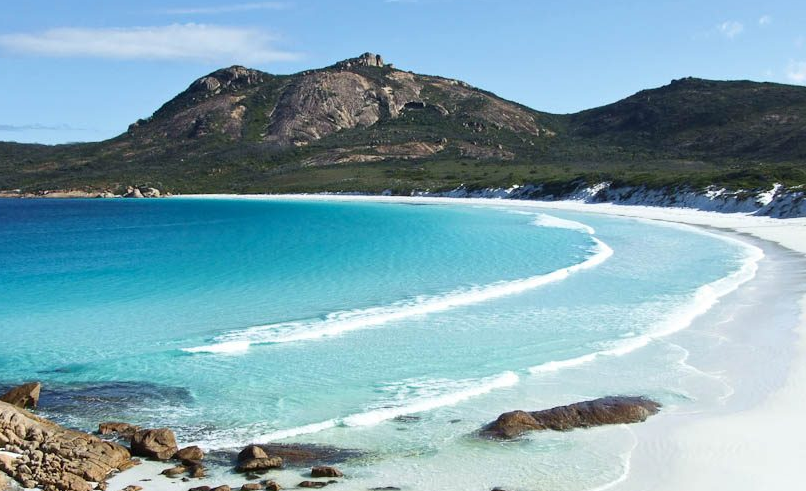The beauty of Western Australia’s Cape Le Grand National Park is the subject of countless misty-eyed campfire conversations, with talk of its spectacular coastal scenery and white sandy beaches firing the imagination like few other places can. Cape Le Grand is filled with so many place to see and stay. There is a variety of accommodation to suit all tastes. Caravan parks are also popular for those who like camping.
And, this is one location where the reality is pretty much guaranteed to match the hype … simply because it really is breathtakingly gorgeous. Located 40 kilometre drive east of Esperance in the state’s south, travellers may realise a dream when they feel the sand between their toes.There’s rolling heathland, stark granite outcrops, swamps, wildflowers, incredible wildlife and, of course, superb fishing, excellent camping, and truly unforgettable bushwalking. While the iconic Cape Le Grand Coastal Trail wends its way through 15 kilometres of rocky headlands and beaches and represents something of a fitness challenge, it can be broken down into four more bite-sized chunks for the less ambitious.
The walk starts at Le Grand Beach and takes happy hikers to the wonders of Hellfire Bay, Thistle Cove and Lucky Bay before ending at Rossiter Bay. The sweeping sands of Cape Le Grand Beach star in numerous postcards and drop the jaws of first-time visitors. The beach sits at the foot of the 345-metre Mount Le Grand and a bit of a climb here will deliver amazing views of the coastal plain.

Hellfire Bay is another stunning bay where visitors love to stop and soak up the beauty, and perhaps take a dip in the endlessly inviting turquoise waters. The wide Lucky Bay was named when Captain Matthew Flinders and the HMS Investigator took shelter here during a storm in 1802, and the event is marked by a plaque at a lookout. Thistle Rock is famed for its ‘whistling rock’, its spectacular coastal views, and as the place where Flinders’ run of good luck continued as the ship’s master, John Thistle, discovered a source of fresh water.
Other highlights of this unique park include Rossiter Bay and Dunn Rocks, a low, rocky headland flanked by sweeping white beaches, and then there’s Frenchmans Peak, named after its resemblance to the hats worn by French troops in the 1800s. A steep 262-metre climb to the summit will be rewarded with stunning views of the Archipelago of the Recherche. A large cave near the summit is thought to have formed by waves 40 million years ago when sea levels were 300 metres above their current level.
There’s so much to see, to do, and to learn here that – once you settle in at a campground at either Cape Le Grand Beach or Lucky Bay – you most certainly won’t be in a hurry to leave.
Leave a Reply
You must be logged in to post a comment.